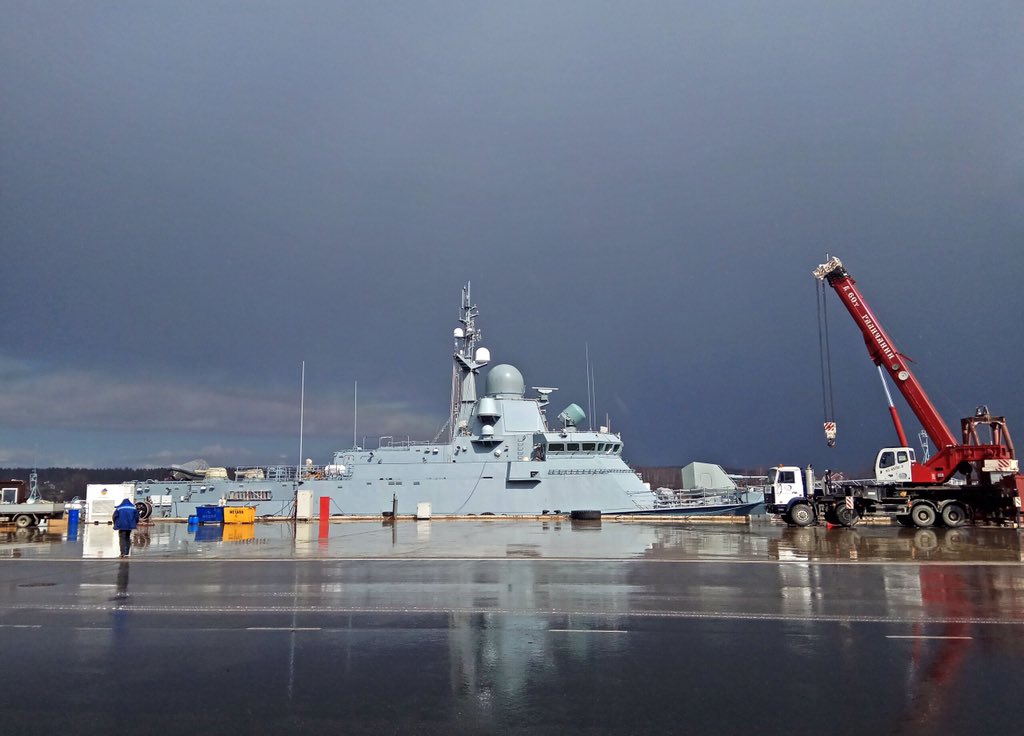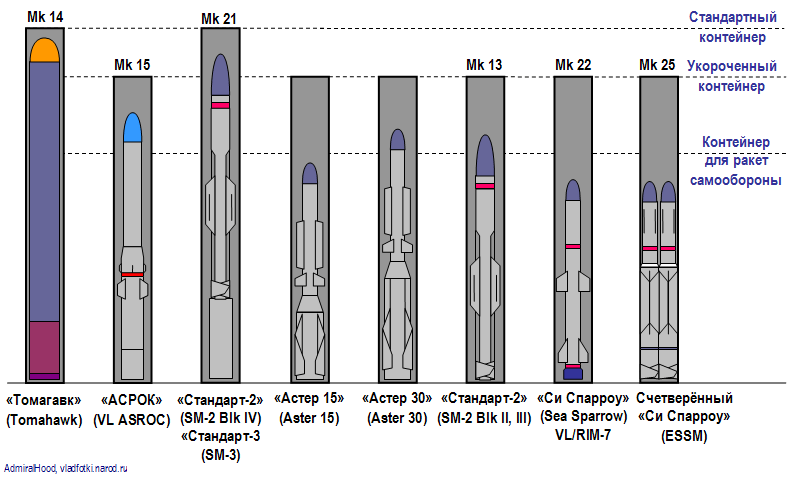You didn't get what I said. I said you get only two of these three options --- the Kashtan, the UKSK, and the Redut. The 22800 doesn't have the Redut VLS. If you have the Kashtan and the Redut, you don't get the UKSK. If you have the Redut and the UKSK, you don't get the Kashtan.
And why should any future ship be only limited to only 2 out of those 3 options ? There is no universal rule or engineering law stating that a ship cannot be limited in such a manner.
Moreover, if we are to take a look at the PLAN inventory it is clear that the Universal VLS combines both the USKS and the Redut into one package. Even more, I have never stipulated that any future PLAN corvette must have a Redut esque VLS for medium range missiles. That is not within their scope of combat. It is the Universal VLS/USKS that I have always focused on, for them to launch either ASROCS or AShMs, not medium range sams like the Vityaz.
I am not sure if every ship has the Pantsyr reload, there is something supposed to be beneath the CIWS to the side like hatches but I don't seem to see that in many installations. Some installations don't even have the missiles.
That is obvious because the Pantsyr is only begining its naval service on the Karakurt Classes and the lead ship is even yet to be launched yet. But we can still draw inference from the Kashtan CIWS which has been installed on the Gepard class frigates (though they are equal to the 056As in weight) and the Steregushchiy-class corvette. And even if we are to be so generous as to assume that in the unlikely case the Gepards did not have the auto reloading mechanism included (though this is unlikely since they explicitly reported that these versions are the exact same versions to be found on larger vessels as well), they still have by default an 8 round salvo which is what the current 056A has now.
Another thing with the Kashtan is that you have the entire complex paying attention to one target. If you keep the guns and missiles separate, each can pay attention to different targets.
With anti missile defense, it is always a prerogative to ensure that the first target is persecuted fully to ensure it's destruction before moving on to the next. So having the Kashtan's focus in this matter is not a weakness, moreover with infared homing or any self guidance system installed. The missiles can still persecute targets independent of the guns in a fire-and-forget manner.
More helos allow you to cover more water and coverage is everything. Two helos engaging a submarine in a coordinated pair is another point. ASW is another thing that can determine the course of any potential conflict with the PLAN. The US and Japan has many capable submarines. There is also India and Vietnam. I believe the PLAN is genuinely and correctly concerned about ASW, and that concern is a driving force for 054A and 056 high prioritization. It will drive the next generation ASW combatants.
We must also consider, again the enviroment that the 056As and any future successor is expected to work in, as well as advances in technology. In costal littoral areas, the 056A can count of a variety of support to assist it in its ASW duties (like the Y-8 MPA and the underwater hydrophone network). Moreover, vertical take off UAVs can be stowed aboard in less space than a single helicopter would demand. And since the ship would be operating within range of friendly EW assets, there is a low risk of these UAVs being jammed.
I'm not sure. That's like Russian heavy corvettes, which NATO classifies as frigates. I don't think such as class replaces the larger frigates, rather it bridges the gap between corvettes and frigates. Like Project 20380/85 between 22800 and the Grigorovich and Gorshkov frigates.
Lets consider first the military requirements of the Russian navy as well its economic capacity in this matter. For starters, blue water operations is definitely not on their books for the next 20-30 years . Yet at the same time they urgently need a platform that can be carry out long range land and naval strikes within it's immediate vicinity, but without the usual related costs and logistical requirements due to their ship building industry's state. This drove them to develop corvettes like the Buyan and the Steregushchiy-class. Ships smaller enough to be cheap to build and maintain yet possessing an unusually heavy punch. But these ships, as you pointed out yourself, puts more emphasis on surface warfare at the costs of ASW.
Then consider China's position, while it has the capacity to build a large fleet. It is also increasingly has the need to maintain a credible blue water fleet for overseas interest, but at the same time it needs to protect it's coastal territories from enemy incursion (especially submarines) and compared to Russia, it has more ports and more important harbors to guard. Also since China is not a party to the SALT agreements, it can maintain land based cruise missiles (and its economy means it can also maintain a large fleet of bombers to launch ALCMs as well) . So it has no need for a sea based platform to scoot around the legal requirements like Russia must.
In short there is little reason why Russia's decision to acquire "heavy corvettes" must be emulated by China.
I don't even know why the 22800 is brought up. The Type 056 is more of the spiritual successor to the "light frigate" line --- the Riga, Koni class, leading to the modern Gepard class. There are a lot more parallels with the Gepard and the 056. Rigas also were the first light frigates of the PLAN, starting this family line that ends with the 056 today. 22800 reminds me of a successor to the Tarantuls.
The 22800 is brought up for the sole reason to prove that a ship's armament is not restricted by either it's size,weight or classification. So lets us keep it as such.
Its not about the 16 cell VLS and I won't focus on that, since its an export detail. Its about the general concept of a small, fast ship with two helicopter support instead of one. You can't assume that the 16 cell VLS might get approved assuming if the trimaran goes into PLAN use. It can be just an export detail. A hypothetical PLAN version can be satisfied with lets say HQ-10 in place of the VLS. The important thing is having two helicopters on a hanger on a small, fast ship that can be cheaply mass produced.
A second helo with a hanger is the biggest and most potentially worth it upgrade over other potential upgrade options, e.g. VLS, CIWS, etc,.
Then why are you always highlight the number of VLS cells in all your earlier posts ? As well as putting for the caveat that a 16 cell is enough for ASW duties for both
littoral and blue water operations for a
corvette and frigate hybrid ?
But lets for the sake of discussion go with your proposition that in the future the PLAN wants to acquire a trimaran design weighing around the 2000 to 3000 ton like the picture you posted whose dimensions are slightly larger or around the same size as the 054A. And they want it to fulfill the roles of both the earlier Type 54A and 056A.
We can immediately see the problems with this proposition, because at even first glance this will not be a small ship.
Also current estimates hints at the PLAN wanting no fewer than 60 LCS and at least 40 frigates, possibly even 60 as well in the future. And let us also be generous in this instance and assume that the PLAN can have a modular set up for the coastal and blue water variants in terms of VLS count, this will mean that the PLAN would be spending a lot of unnecessary money on a large hull that will be only equipped for coastal combat when they can just have a smaller hull that will be cheaper but still perform roughly the same. China can very well save much from having 2 separate classes of ships of 60 hulls each instead of a 120 hull fleet of a same make.
If having a second helicopter on the platform is of such importance in this matter, then fine by all means, the PLAN can possibly acquire a 056A successor that has a design to accommodate such. But let us be cognizant of the fact that the PLAN's requirement for it's future frigates calls for a armament of no less then 32 VLS cells, long range radars, and a robust CIWS defense. And that there is a fine line between it an a off shore patrol vessel's capability.






